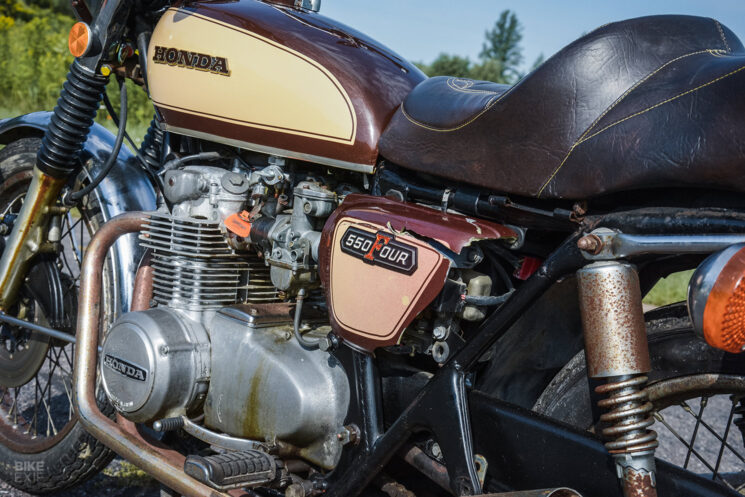![]()
They say one man’s trash is another man’s treasure, and we’ve certainly dragged our fair share of trashed motorcycles home. Wherever we scrounge them up, the rose-colored glasses wear the heaviest tint after you’ve bagged a neglected classic for cheap. But before you get carried away, it pays to take a good look at what you have and what you hope to do with it.
Since our CB550F tracker project needs to happen quickly and on a budget, a full engine overhaul wouldn’t really fit the program. So our first priority was getting this crusty classic motorcycle running.
![]()
If you caught Part One of our CB550 build, you know we’re on a mission to build a fun-loving urban tracker on an everyman budget—based on a doozy of a 1975 CB550F that we grabbed for just $400. We’re thrilled to have Motogadget, Tuffside, Bridgestone, Lowbrow Customs and Biltwell Inc. on board for the revival.
We trusted in the deities of Honda reliability when we picked up the CB550 from the seller, knowing only that the bike had a clear title and kicked over freely. But before we started ordering parts, I needed to at least hear this thing make noise.
![]()
For the garage graybeards in the group, I’ll save you the time and reveal that the Honda showed sufficient signs of life to proceed. But if you’re a bit less experienced, treat the following as a loose order of operations for verifying that your latest bargain-buy motorcycle is worth reviving, or if you’ve got a much larger project on your hands.
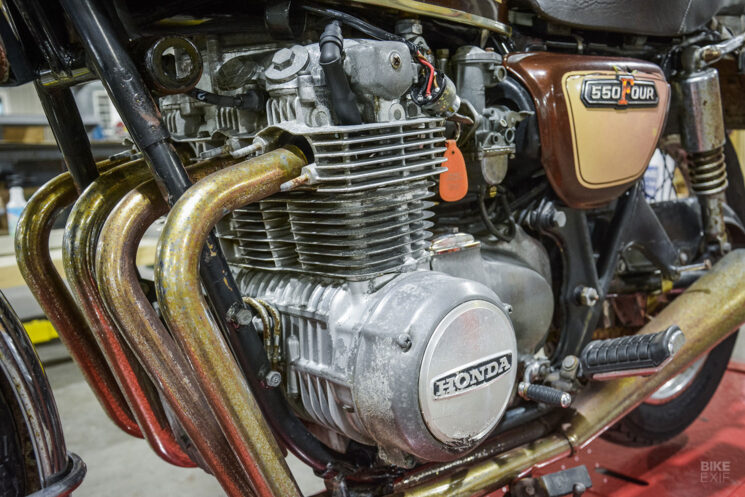
Will it crank? Father time and the elements are not friendly to your internal combustion engine, and while many of us have broken seized engines loose and sent it, that’s not always a recipe for success. The first thing we did was verify that our wet-sump four-cylinder had decent oil in it, and we shot some penetrating fluid down the spark plug holes. That helps restore some lubrication in the cylinder and also helps loosen any rings that are stuck in their grooves.
After letting the lube do its thing for a few hours, we could crank the engine with a clear conscience and did so with the spark plugs out, the ignition off and the fuel supply lines disconnected. Next, it’s time to test compression, but I’m going to the electric starter for that.
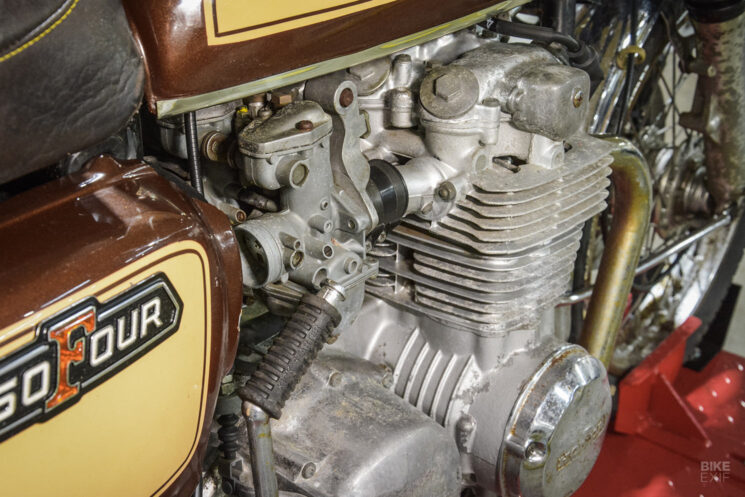
Without the correct battery for the Honda on hand, we connected jumper cables from the CB to an old car battery (verify you have a 12-volt system first) to test our wiring and electric starter. Obviously having the right battery for your bike is preferred, but the extra CCAs won’t hurt anything here. The e-starter worked like a charm, and our compression numbers all came in just under 150 psi.
While that’s a little lower than we’d like to see, it’s not surprising with the bike sitting so long. We’ll check again after a few heat cycles to see how things improve once the rings free up.
![]()
Does it spark? Ignition systems on classic motorcycles can be pretty hit-or-miss after all these years, but we were pretty confident we could make the Honda’s old-school points ignition system spark. Maybe we’d have to clean up or replace the points, or a coil or condenser, but that beats sourcing electronic ignition parts at times.
But the Honda gave us no trouble and supplied a good consistent spark across all four cylinders.
![]()
The most drama came from the worn-out key, which required a decent amount of fiddling to rotate the tumbler. With the ignition and killswitch on, we grounded each spark plug to a cam-cover screw and saw beautiful spark. One of those in-line spark testers can be handy here as well.
You might not be so lucky, and troubleshooting a no-spark situation may require a deep dive into the forums and proficiency with a multimeter.
![]()
How bad is the fuel system? We knew the fuel system on our Honda would be a total disaster after its four-decade slumber, and all the usual suspects were present. There’s light rust in the tank, deteriorated old fuel lines and the carburetors need to be gone through. Call me lazy, but I wasn’t keen on a full overhaul of the Honda’s Kehin 022A carburetors just yet, so fuel delivery for this test run would be via the ad hoc method.
A spray can of starter fluid is the easiest option, but I stay away from the stuff when I can, and I wanted the CB to have as much lubrication as possible for our test fire. My method of choice is a little cocktail of ethanol-free gas with a splash of two-stroke oil, ideally in some sort of gravity-feed tank. Unfortunately, we didn’t have that on hand, and the jets are probably plugged solid anyhow, so unmetered fuel it is.
![]()
One of those little pump oil cans works in a pinch, and we shot a healthy amount of fuel in each carburetor. You’re not going to get flawless running and idling from this method, since you’re dealing with unmetered fuel, but in our experience, 60% of the time, it works every time.
Our CB550’s four-cylinder clamored to life in short order, coughing dust, dead insects and two-stroke smoke from the loose-hanging exhaust system. We got a few revs in and the engine sounded surprisingly healthy for enduring decades of hibernation.
![]()
Without the carburetors functioning properly, the engine won’t run long enough to test much else, like the transmission or the clutch, but I feel a lot better about breaking the rack carbs down now that I’ve heard it run.
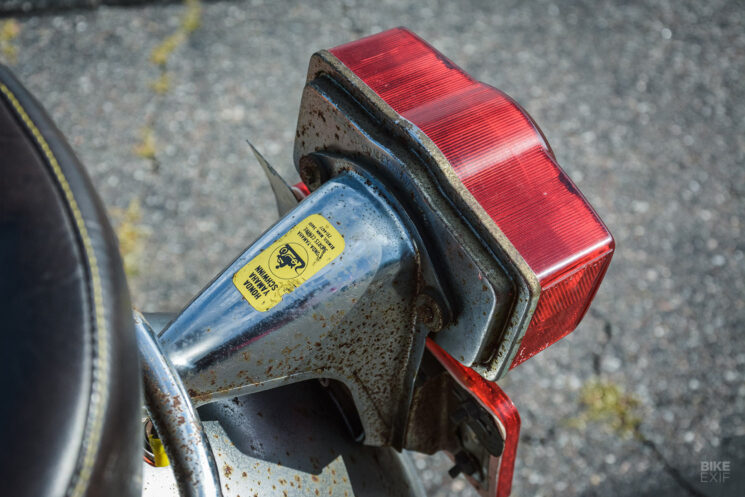
Is the paperwork clean? It’s the least exciting aspect, and all too often the reason motorcycles sit unused in the first place, but it’s a single piece of paper that can make or break your project. If you want to play it safe, don’t buy a bike with anything less than a clean title signed over by the seller, but there are exceptions to the rule.
The scope of these ramblings doesn’t merit a deep dive into titling laws state by state. But there are states that don’t even issue titles to older bikes, and you’re good to go with a bill of sale and a clean VIN.
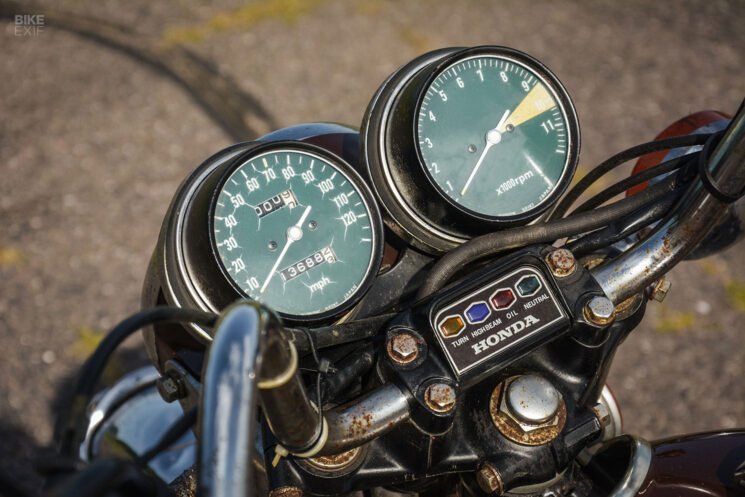
Some of the well-known titling loopholes can still be used, freshly excluding Vermont, but you do have options. If the juice is worth the squeeze, ponying up for a bonded title is also a good way to go.
The point of the story is do your homework, and make sure the bike isn’t stolen before you break out your bankroll. We got lucky, as our $400 CB550 came with a clear title from the 1970s. With our due diligence complete, it’s time to finally start transforming our CB550F into something a bit more exciting—let’s strip this thing down!
